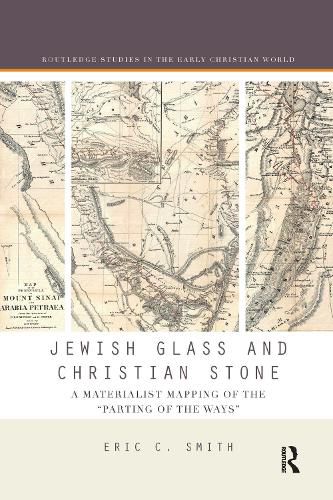Readings Newsletter
Become a Readings Member to make your shopping experience even easier.
Sign in or sign up for free!
You’re not far away from qualifying for FREE standard shipping within Australia
You’ve qualified for FREE standard shipping within Australia
The cart is loading…






In recent years scholars have re-evaluated the parting of the ways between Judaism and Christianity, reaching new understandings of the ways shared origins gave way to two distinct and sometimes inimical religious traditions. But this has been a profoundly textual task, relying on the writings of rabbis, bishops, and other text-producing elites to map the terrain of the parting. This book takes up the question of the divergence of Judaism and Christianity in terms of material–the stuff made, used, and left behind by the persons that lived in and between these religions as they were developing. Considering the glass, clay, stone, paint, vellum, and papyrus of ancient Jews and Christians, this book maps the parting in new ways, and argues for a greater role for material and materialism in our reconstructions of the past.
$9.00 standard shipping within Australia
FREE standard shipping within Australia for orders over $100.00
Express & International shipping calculated at checkout
In recent years scholars have re-evaluated the parting of the ways between Judaism and Christianity, reaching new understandings of the ways shared origins gave way to two distinct and sometimes inimical religious traditions. But this has been a profoundly textual task, relying on the writings of rabbis, bishops, and other text-producing elites to map the terrain of the parting. This book takes up the question of the divergence of Judaism and Christianity in terms of material–the stuff made, used, and left behind by the persons that lived in and between these religions as they were developing. Considering the glass, clay, stone, paint, vellum, and papyrus of ancient Jews and Christians, this book maps the parting in new ways, and argues for a greater role for material and materialism in our reconstructions of the past.